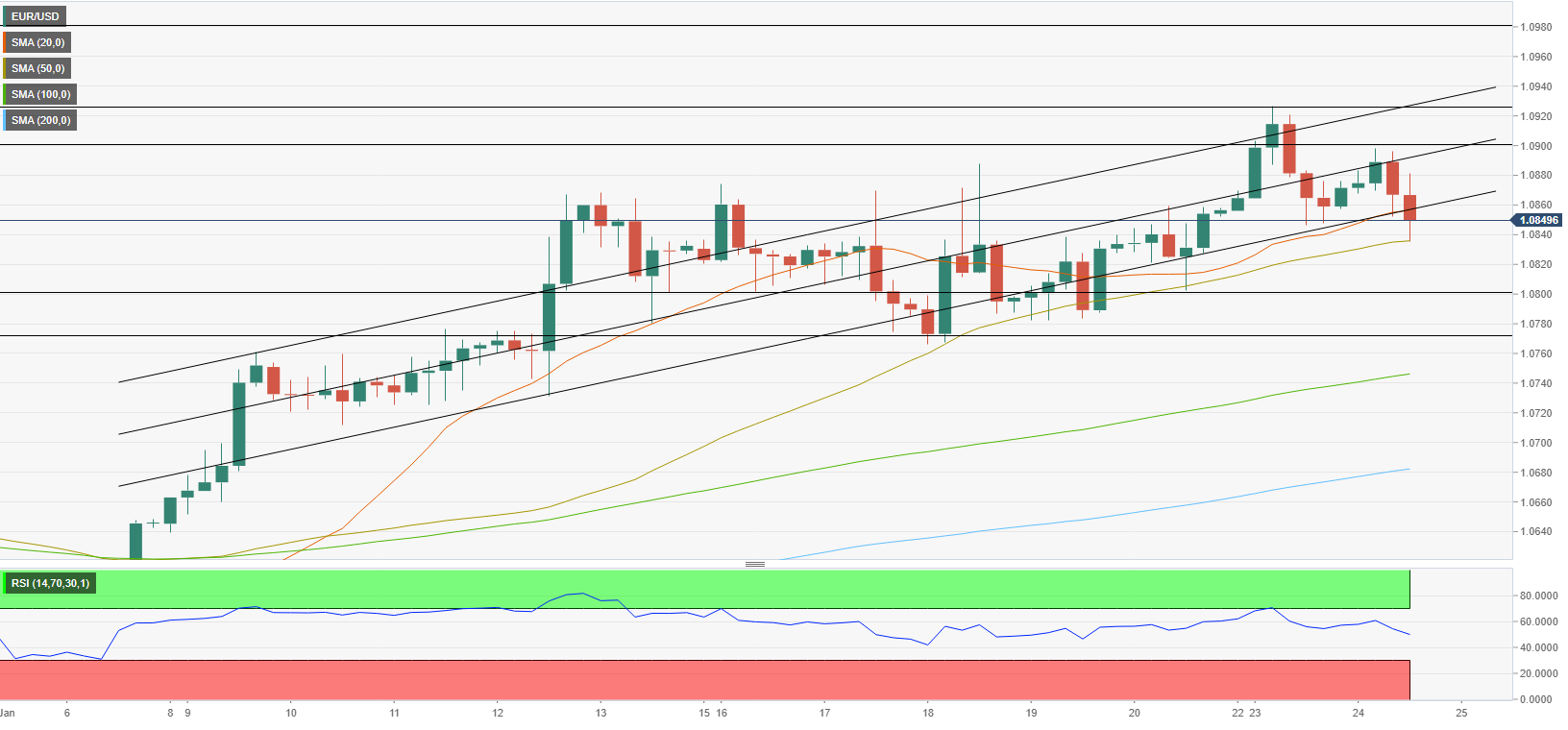- EUR/USD has turned south and declined below 1.0850.
- PMI surveys from the US provided a boost to the US Dollar.
- The pair needs to close the day above 1.0860 to shake off the bearish pressure.
EUR/USD has lost its traction and dropped below 1.0850 amid renewed US Dollar strength in the second half of the day on Tuesday. The pair’s near-term technical outlook points to loss of buyer’s interest and 1.0830 aligns as the first support.
Although European Central Bank (ECB) policymaker Joachim Nagel reiterated that they have to continue to tighten the monetary policy to keep inflation expectations anchored, the Euro struggled to regain its traction. Additionally, the data from the Eurozone revealed that the business activity in the private sector expanded modestly in early January with the S&P Global Composite PMI rising to 50.2. Nevertheless, EUR/USD stayed on the back foot as major European equity indexes stayed in the negative territory during the European trading hours.
Later in the day, S&P Global announced that Manufacturing and Services PMIs for the US improved marginally in January’s flash estimate.
Commenting on the data, however, “the rate of input cost inflation has accelerated into the new year, linked in part to upward wage pressures, which could encourage a further aggressive tightening of Fed policy despite rising recession risks,” noted Chris Williamson, Chief Business Economist at S&P Global Market Intelligence.
In turn, the US Dollar gathered strength against its rivals and forced EUR/USD to continue to stretch lower. Moreover, Wall Street’s main indexes are trading deep in red after PMI data, providing an additional boost to the safe haven US Dollar. Unless risk flows return, EUR/USD is likely to have a hard time gathering recovery momentum.
EUR/USD Technical Analysis
EUR/USD broke below the ascending regression channel coming from early January and tested the 50-period Simple Moving Average (SMA) on the four-hour chart at 1.0830. Reflecting the bearish tilt in the short-term outlook, the Relative Strength Index (RSI) indicator dropped slightly below 50.
If the pair fails to return within the ascending channel by making a four-hour close above 1.0860 (lower limit of the channel), it could test 1.0830 again and target 1.0800 (psychological level, static level) and 1.0770 (static level) afterward.
In case EUR/USD manages to close the day above 1.0860, buyer could show interest and help the pair rise toward 1.0900 (psychological level, mid-point of the ascending channel) and 1.0930 (upper-limit of the ascending channel).




